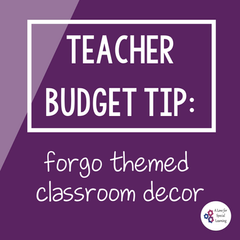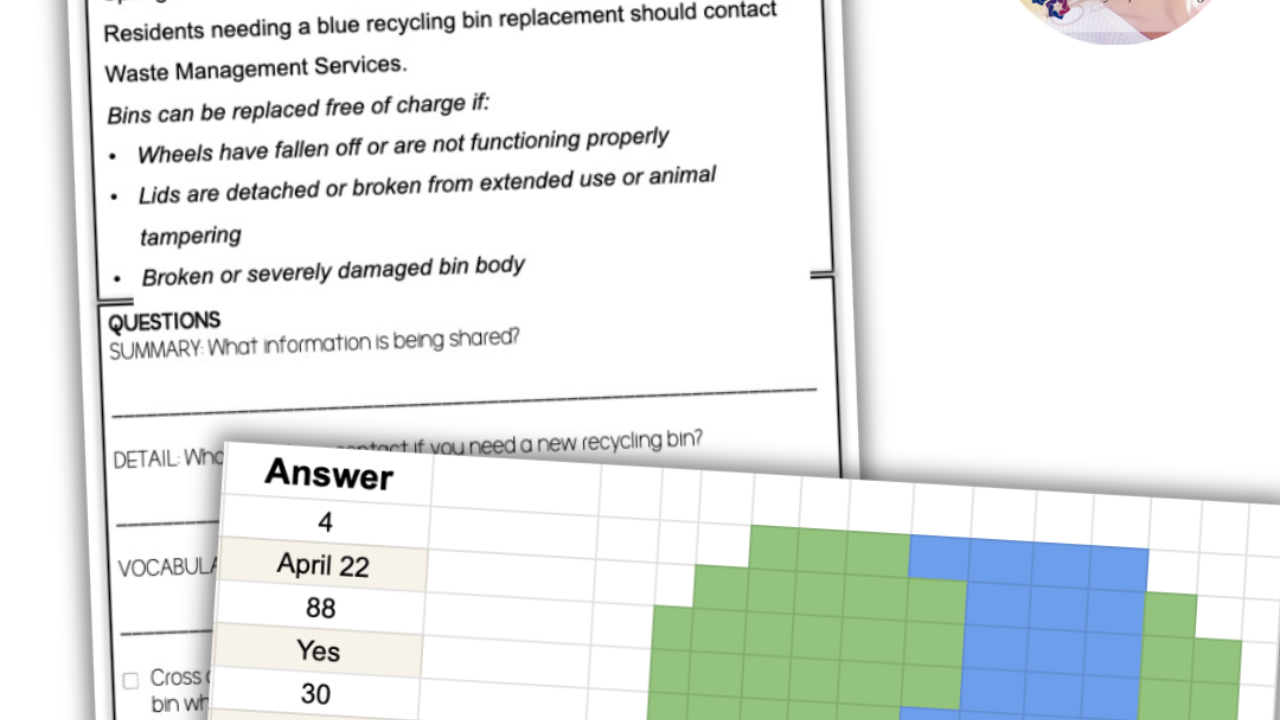5 Things I Don’t Do as a Transition Teacher
Aug 11, 2021
I’ve been teaching transition for the majority of my teaching career and having taught in high school settings prior, there are so many notable differences (all of which are for the best, in my humble opinion).
I’ve listed 5 things I don’t do as a transition teacher that many other high school teachers do and that is okay! There can be so much autonomy in transition and this should be a blessing to capitalize on for our young adults.
Continue reading to find out the 5 things I don’t do as an adult transition teacher!
As a transition teacher, I don’t...
1.Schedule my day with academic classes
The schedule of our day includes time for functional academics, like cooking, banking, and shopping, not solely academics, like math, social studies, or history.
The focus of transition is to prepare a young adult student to live their life after school ends. Since transition hones in on functional academics and independent living skills, having specific classes on ‘academic topics’ keeps students stuck in the high school mindset (where grades matter***, tests are a thing, and group projects were inevitable). Move their mindset to focus on what THEY want to do with the rest of their life and frame your classes and schedule on how you can incorporate functional academics into meaningful lessons.
For example- I don’t just teach students Math, I teach them how to count money that they will deposit into an ATM. I don’t teach Reading, I teach students how to find the movie theatre schedule online, locate the movie they want to see based on the movie titles and pictures, and then find the time that works best for their weekend schedule.
***And no, my student’s do not receive grades. Period.
2. Schedule Every Minutes of the School Day For Them
Downtime is a good thing for young adults in transition. They often expect that someone else will tell them where to go, when to go, and what to do nearly every second of the day. Many of them don’t know what to do when they have 5-10 minutes of their OWN time.
Consciously giving students random time throughout their day (5-10 minutes is definitely enough) and teaching them HOW to independently engage in recreation leisure activities is a top life skill in my book.
Families just might hug you when you say you want to give their student the ability to occupy their own time for a few minutes in a way that they prefer and enjoy.
Not only will families thank you for teaching their young adult this valuable skill, but so will adult day program personnel. It’s likely those staff and programs will prefer participants to have the ability to occupy their own time every once in a while since the staff:participant ratio is much higher than it is in the school setting.
3. Have a Themed Classroom

Teacher Budget Tip: Forgo the themed classroom decor
If you walked into my classroom you would NOT see a Pinterest-worthy classroom. There is no reading nook, no bulletin board topic of the month, and no rainbow-colored rugs (and not even a task box desk facing a wall).
Our students are out in the community 5 days a week. We don’t focus our time in the classroom, so there is no need to have a picture perfect room.
Work and volunteer places don’t have themed breakrooms, fitness centers don’t have themed fitness rooms, and the grocery store definintely doesn’t have unnecessary decorations. In an effort to successfully transition students from transition programming to ‘real life,’ I don’t have a themed classroom and I am A-Okay with that!
4. Have Student Wear Their Street Clothes to Volunteer/Work
Before loading the bus to their volunteer job or moving rooms to work on vocational skills, my young adult students change into their Work Polo. It is a polo provided by my school that they wear when they are out in the community or working on vocational skills. Not only does this mentally and visually signal to the student that they are ‘working’ but it also gives them an additional opportunity to practice time management (they have to change before they load the bus and leave) and laundry (they have to keep it clean and hang it up before they need it again).
If you are looking to increase the vocational feel of your community based learning sites, consider asking for a few extra uniforms or request that your school buy several sizes of a general polo so your young adults can begin practicing this natural skill.
5. Utilize the High School Buildings
The transition program I teach in is located in an off site building. While we are close to the high schools in our district, we don’t access those buildings for learning, fitness, or vocational opportunities.*
Since the high school isn’t their same age peers anymore and it won’t be available for general access after they exit, our focus is on getting them out into community environments that they CAN continue to access after they age out of special education services. Best practice is to be in the community that the young adult will continue to have access to during their nights and weekends and into adulthood.
We work with a local fitness center to get a discounted student rate and my school pays for monthly memberships while the young adults are in school. We access businesses and organizations in the area for vocational and volunteer experiences. We learn in the transition program building or go out into the community and do learning in those environments, like the ATM, bank, store, or other setting.
*We do plan to sell juice to staff two times a week and will drop if off in their office or classroom as many of our other community group volunteer sites are not open for us to utilize at this time.
While every school is different and every transition program is different, there are ways to make any programming meaningful and most appropriate for young adults in transition.
Please comment below with other things you DON’T do at the transition level!















